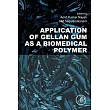Radio astronomy is irreversibly moving towards the exabyte era. In the advent of all-sky radio observations, efficient tools and methods to manage the large data volume generated have become imperative.
This book brings together the knowledge of several different research fields to present an overview of current state-of-the-art methods in data-intensive radio astronomy. Its approach is comprehensive and data-centric, offering a coherent look at the four distinct parts of the data lifecycle:
- Data creation, storage and archives
- Data processing
- Post-processing and data analysis
- Data access and reuse
Written by experts across astrophysics, high-energy particle physics, data science, and computer science, this volume will help researchers and advanced students better understand the current state of data-intensive radio astronomy and tackle the major problems that may arise from future instruments.



 天天爆殺
天天爆殺  今日66折
今日66折 























 博客來
博客來 博客來
博客來 博客來
博客來 博客來
博客來 博客來
博客來